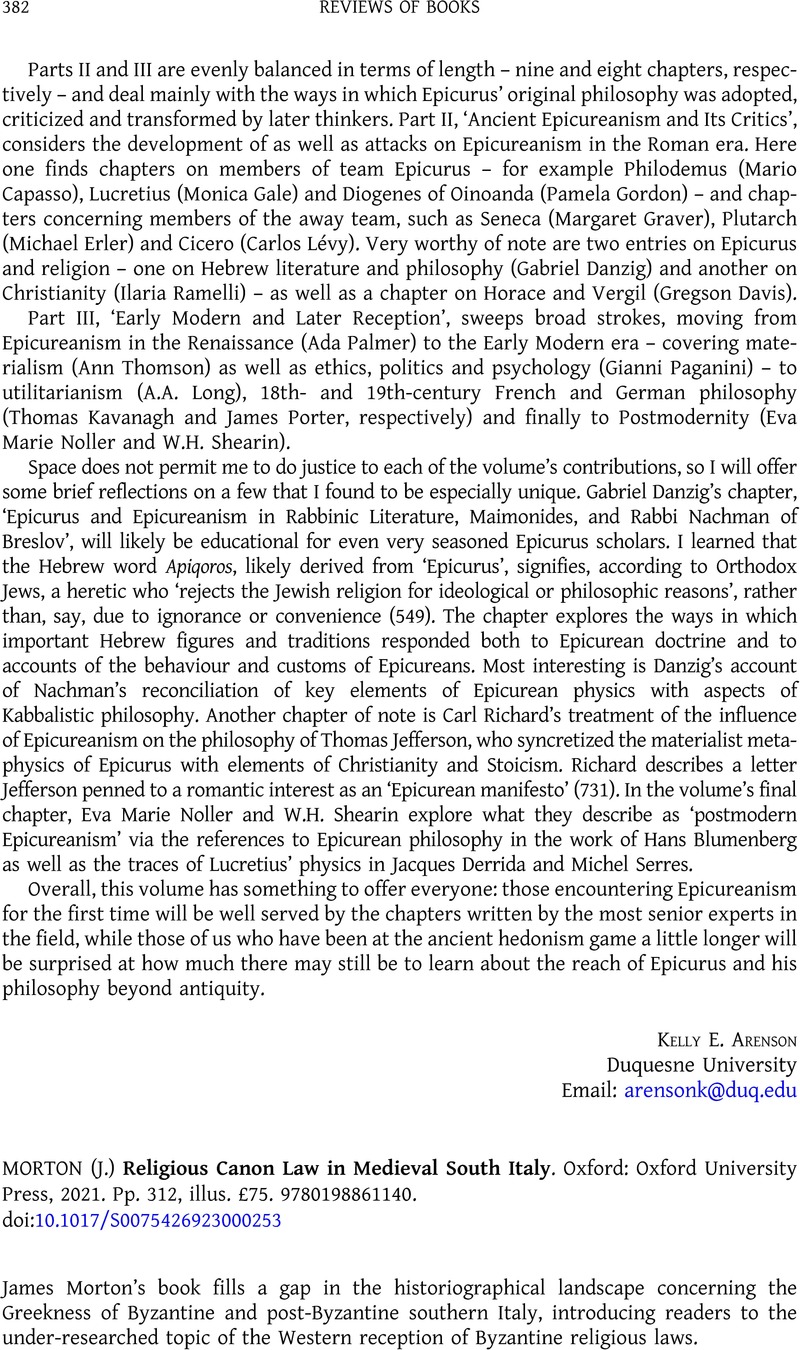No CrossRef data available.
Article contents
(J.) MORTON Religious Canon Law in Medieval South Italy. Oxford: Oxford University Press, 2021. Pp. 312, illus. £75. 9780198861140.
Review products
(J.) MORTON Religious Canon Law in Medieval South Italy. Oxford: Oxford University Press, 2021. Pp. 312, illus. £75. 9780198861140.
Part of:
Byzantine and modern Greek studies
Published online by Cambridge University Press: 31 August 2023
Abstract
An abstract is not available for this content so a preview has been provided. Please use the Get access link above for information on how to access this content.

- Type
- Reviews of Books
- Information
- Copyright
- © The Author(s), 2023. Published by Cambridge University Press on behalf of the Society for the Promotion of Hellenic Studies


